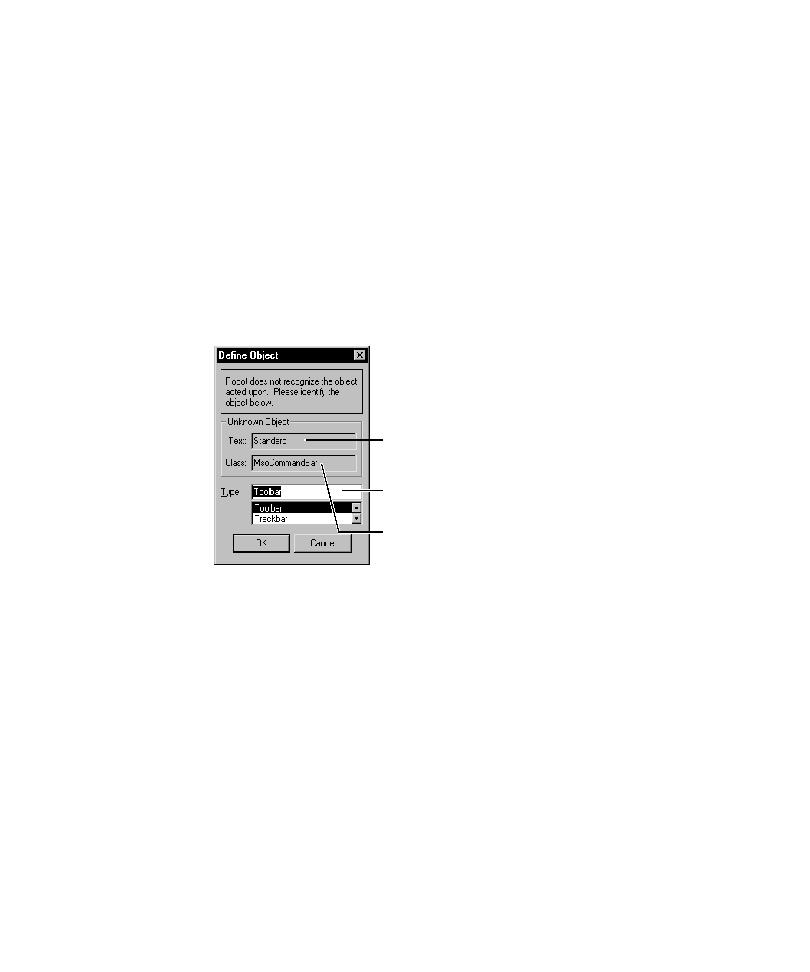
Defining Unknown Objects During Recording
recognizes all standard Windows GUI objects and many custom objects. You can
also set a recording option so Robot automatically associates unrecognized objects
with the Generic object type.
click an object that Robot does not recognize. Use this dialog box to map the object
to a known object type.
1. From the Type list in the Define Object dialog box, select an object type to
defining. For example, if the unknown object is a custom toolbar that has the
same behavior as a standard Windows toolbar and supports the same
programmatic interface, select Toolbar from the Type list. By mapping the
object to a known object type, you will make your script more readable and
Robot will be able to test the special properties associated with that object type.
Also, Robot will be able to identify the object more accurately by using the
object recognition methods.
playback. For example, an object might look and act like a standard toolbar but
might actually not respond correctly to the messages that are sent to a standard
toolbar. If you are not sure which type to use, select Generic. Robot will be able
to test the basic set of the object's properties, and will use the object's x,y
coordinates to locate the object.